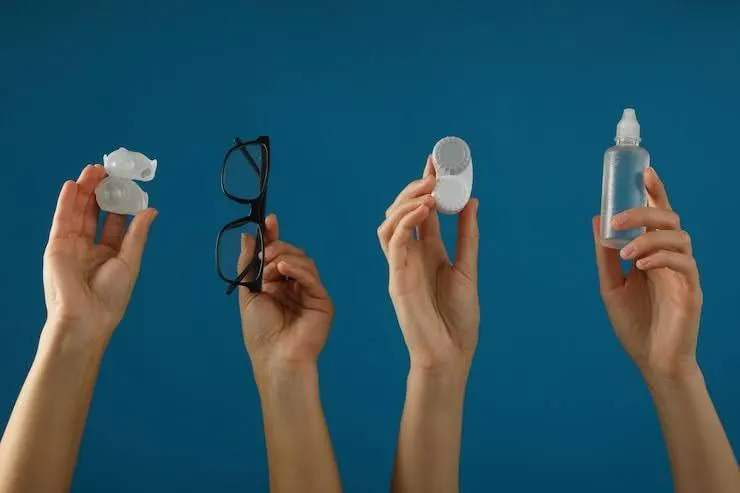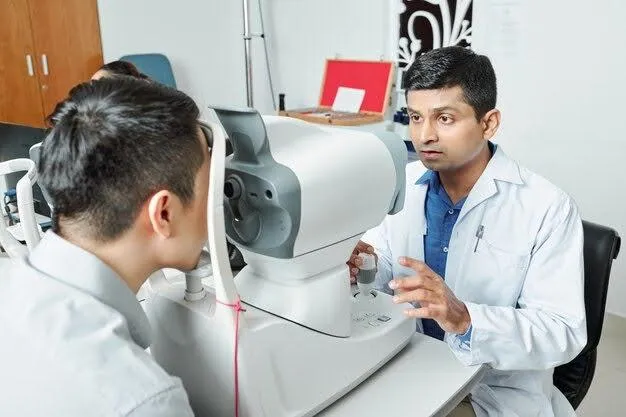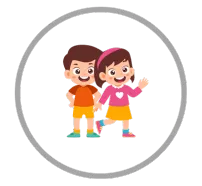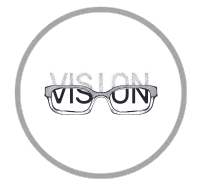Eye Conditions
Understanding Hyperopia and Its Symptoms
FSDAVCFEBFEVSDDVFSD
FSDAVCFEBFEVSDDVFSD
FSDAVCFEBFEVSDDVFSD
What Causes Hyperopia and Why It Happens
Hyperopia, or farsightedness, occurs when light focuses behind the retina due to a short eye length or a flat cornea. This causes nearby objects to appear blurry, while distant vision often remains clear—especially in young people who can compensate using eye muscles. However, this effort may lead to headaches or eye strain during reading or close-up tasks.
In children, mild hyperopia may go unnoticed because they naturally focus well. Over time, though, constant effort can cause fatigue or even lead to crossed eyes (strabismus). Regular vision screenings and comprehensive eye exams are essential for early detection and proper treatment.
Hyperopia, or farsightedness, occurs when light focuses behind the retina due to a short eye length or a flat cornea. This causes nearby objects to appear blurry, while distant vision often remains clear—especially in young people who can compensate using eye muscles. However, this effort may lead to headaches or eye strain during reading or close-up tasks.

In children, mild hyperopia may go unnoticed because they naturally focus well. Over time, though, constant effort can cause fatigue or even lead to crossed eyes (strabismus). Regular vision screenings and comprehensive eye exams are essential for early detection and proper treatment.

Signs you might be farsighted
Some signs of farsightedness can resemble other vision conditions, making it important to watch for key indicators. People with hyperopia often have difficulty focusing on close-up tasks, such as reading, drawing, or using a smartphone. This may cause blurry words, frequent eye rubbing, or squinting. In children, symptoms can be harder to detect, as they may not realize their vision is blurry. Instead, they might avoid reading altogether, struggle with homework, or seem less engaged during near-vision activities at school.
Adults, especially those over age 40, may begin to notice their eyes tire quickly when doing close-up work, such as reading or using a computer. This discomfort can show up as headaches, sore eyes, or a general sense of visual fatigue after extended periods of concentration. These symptoms are often overlooked or attributed to stress, but they can be key signs of untreated hyperopia. A comprehensive vision exam is the best way to detect and manage the condition.
Hyperopia can also impact a child’s eye development. Without proper correction, the strain of constant focusing can lead to crossed eyes (strabismus) or affect learning. Early diagnosis helps prevent complications and ensures clearer, more comfortable vision for all ages.
Farsighted vs. Nearsighted: Key Vision Differences

Hyperopia and myopia are common refractive errors that affect vision in different ways. In myopia, light focuses in front of the retina, causing distant objects to appear blurry while near vision remains clear. In contrast, hyperopia causes near objects to appear blurry, though distance vision is often less affected—especially in younger individuals who can naturally compensate. This difference means that while a nearsighted person might take off their glasses to see better up close, a farsighted person may struggle to read even if their distance vision is clear.
Understanding these distinctions is important for personalized prescriptions, which are determined during comprehensive vision exams.

Since hyperopia can develop gradually and be masked by the eye’s natural focusing ability, it often goes unnoticed without professional evaluation. For school-aged children and working adults, untreated farsightedness can lead to eye strain, impacting comfort, attention, and productivity throughout the day.
Parents who notice their children struggling to focus on books or avoiding homework might mistake it for behavioral issues, but it could be uncorrected hyperopia. During pediatric eye exams, optometrists use advanced diagnostic tools to detect hyperopia, even when children don’t express any vision problems. Early treatment not only improves academic performance but also ensures greater comfort during daily activities.
In adults, untreated hyperopia can cause chronic discomfort and visual fatigue, especially during tasks like reading small print or working on a computer. The eye muscles overwork to compensate, leading to strain. Glasses or contact lenses provide immediate relief by correcting the focus point. Routine eye care is vital, particularly for those over 40, when presbyopia may combine with hyperopia. An experienced eye doctor can diagnose these overlapping conditions and recommend the best treatment, such as multifocal lenses or prescription reading glasses, tailored to the patient’s lifestyle.
Diagnosis and Eye Exams for Hyperopia
Hyperopia is identified during a standard eye exam through a refraction test that measures how light bends as it enters the eye. For children, optometrists often use dilating drops to relax the eye’s focusing muscles, which helps get an accurate reading. This is important because young eyes can mask farsightedness with strong accommodation, making hyperopia harder to detect. That’s why regular pediatric eye exams are crucial—even if the child shows no symptoms—so any vision issues can be caught and treated early.
In adults, hyperopia is commonly diagnosed during routine vision checks, especially when symptoms like eye strain or difficulty reading arise. Early detection allows for timely treatment, reducing the risk of long-term discomfort or worsening vision. Whether in children or adults, regular eye exams play a vital role in managing hyperopia and maintaining clear, comfortable vision throughout life.
Glasses and contact lens options
The most common correction for hyperopia is glasses with convex (plus) lenses. These lenses bend light toward the retina to improve near vision clarity. Depending on the degree of hyperopia, some individuals wear glasses full-time, while others only need them for close-up tasks like reading or computer work.
Many patients also consider contact lenses, especially those who want a glasses-free experience. Soft contact lenses are widely used for mild to moderate hyperopia because they provide both comfort and clear vision throughout the day.
The most common correction for hyperopia is glasses with convex (plus) lenses. These lenses bend light toward the retina to improve near vision clarity. Depending on the degree of hyperopia, some individuals wear glasses full-time, while others only need them for close-up tasks like reading or computer work.
Many patients also consider contact lenses, especially those who want a glasses-free experience. Soft contact lenses are widely used for mild to moderate hyperopia because they provide both comfort and clear vision throughout the day.


For patients requiring sharper correction, rigid gas-permeable (RGP) lenses are available. These lenses offer precise vision but may take time to adjust to. Both glasses and contact lenses are effective options for managing hyperopia, tailored to each patient’s lifestyle and vision needs.
Ortho-K and LASIK Treatment Possibilities
Although orthokeratology (Ortho-K) is primarily known for treating myopia, there are some custom designs developed to address hyperopia as well. These specialized lenses are worn overnight and work by temporarily reshaping the cornea, allowing patients to enjoy clear vision during the day without the need for glasses or contact lenses. However, hyperopic Ortho-K is less common compared to its use for nearsightedness and is typically suited only for select cases where the patient meets specific criteria. Those interested in this innovative method should speak with an eye care provider who can determine if hyperopic Ortho-K is a viable option based on individual eye shape and prescription.
For adults with stable vision and healthy corneas, LASIK or other types of refractive surgery are more commonly recommended to correct hyperopia. LASIK reshapes the cornea to help light focus correctly on the retina, improving near vision clarity. An optometrist or ophthalmologist will evaluate a patient’s candidacy through a detailed examination that includes measuring corneal thickness, checking prescription stability, and assessing overall eye health. This evaluation is crucial to ensure the safety and effectiveness of the procedure. While LASIK is not suitable for everyone, many patients experience long-term success, often reducing or eliminating their need for glasses or contact lenses altogether.
In cases where LASIK is not an option, alternative refractive surgeries or vision correction methods may be available. It’s important for patients to have a thorough discussion with their eye care professional to explore all possibilities. Personalized recommendations will depend on the patient’s unique eye condition, lifestyle, and vision goals. By considering all available treatments, individuals with hyperopia can find the best solution to improve their vision and quality of life.
When to see an eye doctor
If you or your child frequently struggles with reading, experiences headaches after computer work, or has difficulty with near tasks, it may be time for a vision assessment. Hyperopia is a common refractive error that is highly treatable, but early detection can prevent added eye strain and ensure long-term comfort. Ignoring symptoms can lead to increased discomfort and affect daily activities.
Scheduling a comprehensive vision exam provides peace of mind and a clear treatment plan. Whether through glasses, contact lenses, or surgical consultation, there are effective options available to suit different vision needs and lifestyles. Early diagnosis allows for personalized care that improves visual clarity and comfort.

If you or your child frequently struggles with reading, experiences headaches after computer work, or has difficulty with near tasks, it may be time for a vision assessment. Hyperopia is a common refractive error that is highly treatable, but early detection can prevent added eye strain and ensure long-term comfort. Ignoring symptoms can lead to increased discomfort and affect daily activities.
Scheduling a comprehensive vision exam provides peace of mind and a clear treatment plan. Whether through glasses, contact lenses, or surgical consultation, there are effective options available to suit different vision needs and lifestyles. Early diagnosis allows for personalized care that improves visual clarity and comfort.
If you’re frequently on the move or prefer not to wear glasses, multifocal contacts offer more freedom and convenience. They provide clear vision at multiple distances without the need for switching glasses, making them ideal for active lifestyles.
The team at Kleinwood Vision is experienced in identifying and managing hyperopia and other refractive errors in patients of all ages. Don’t wait until symptoms worsen—early detection leads to simpler, more effective treatment and better eye health for you and your family.
Clear Vision Is Possible with Treatment
Hyperopia doesn’t have to interfere with your daily life. With regular eye exams and the right corrective lenses, patients can enjoy improved comfort and clearer vision. Glasses and contact lenses provide quick relief by helping the eyes focus properly, reducing strain during near tasks like reading or using a smartphone. These solutions make everyday activities much easier and more comfortable.
For those seeking long-term options, procedures like LASIK offer added flexibility by reshaping the cornea to correct hyperopia, often reducing or eliminating the need for glasses or contacts. To support healthy vision at every stage of life, scheduling routine eye exams is essential. From corrective lenses for hyperopia to children’s vision care, proper guidance begins with a trusted optometrist who can recommend the best treatment tailored to your unique needs. If you’re ready to take the next step toward clearer vision, contact us to schedule your appointment today.

Contact Info
Hours of Operation
Mon - Fri | 9:00 AM - 5:00 PM
Sat - Sun | Closed
Holiday Hours: We are closed for the following holidays: New Years Day, Memorial Day, Independence Day, Labor Day, Thanksgiving Day, Christmas Day
© 2025 Kleinwood Vision. All rights Reserved.


